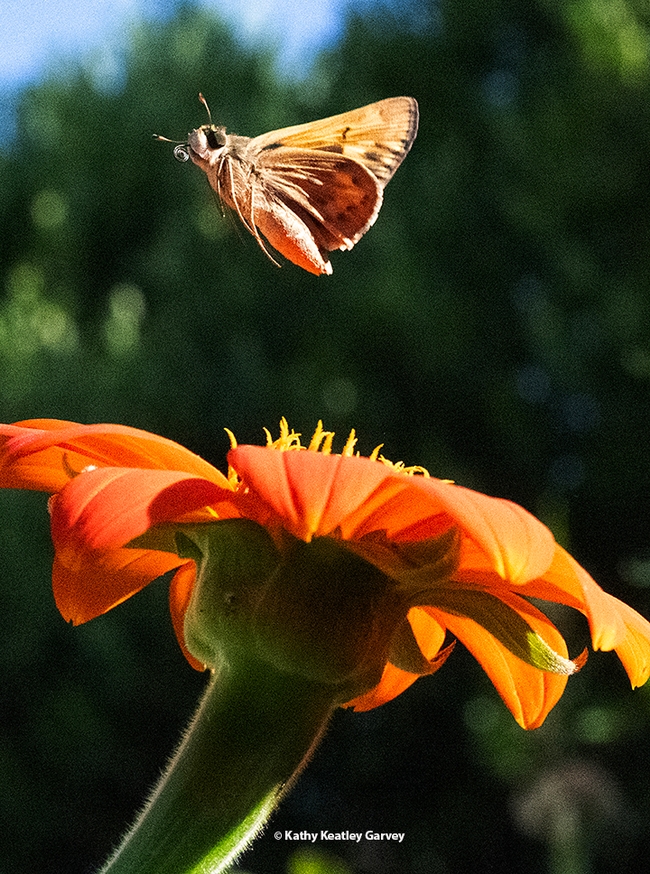Ah, the fiery skipper, Hylephila phyleus!
They are, as UC Davis distinguished professor emeritus Art Shapiro says, "California's most urban butterfly."
Shapiro, who has monitored the butterfly populations of Calfornia since 1972 and maintains a research website at https://butterfly.ucdavis.edu, says the fiery skipper is "almost limited to places where people mow lawns."
That would not include us. Our "lawn" is a pollinator garden.
Some interesting facts about the fiery skipper, from Professor Shapiro:
"Its range extends to Argentina and Chile and it belongs to a large genus which is otherwise entirely Andean."
- It's been in California since at least 1937.
- "It is multiple-brooded, and appears to experience heavy winter-kill in most places; scarce early in the season, it spreads out from local places where it survived, gradually reoccupying most of its range by midsummer and achieving maximum abundance in September and October."
- "Breeds mostly on Bermuda Grass (Cynodon dactylon), which despite its name is native to the Mediterranean region; probably on other turf grasses as well, including the native Distichlis spicata, which is a Hylephila hostplant in Peru and Chile! Adults swarm over garden flowers--Lantana, Verbena, Zinnias, Marigolds, Buddleia, etc., etc. and in the wild are quite happy with Yellow Star-Thistle."
How did it get the fiery skipper get its name? From the males, which are a bright orange, while the females are a dull brown.
Fiery skippers have also been described as "rapid flyers with darting movements."
That's especially true when you're focusing your camera. They dart, they dodge, they don't oblige.
Sometimes, however, you get lucky, and catch them in flight.
Attached Images:
